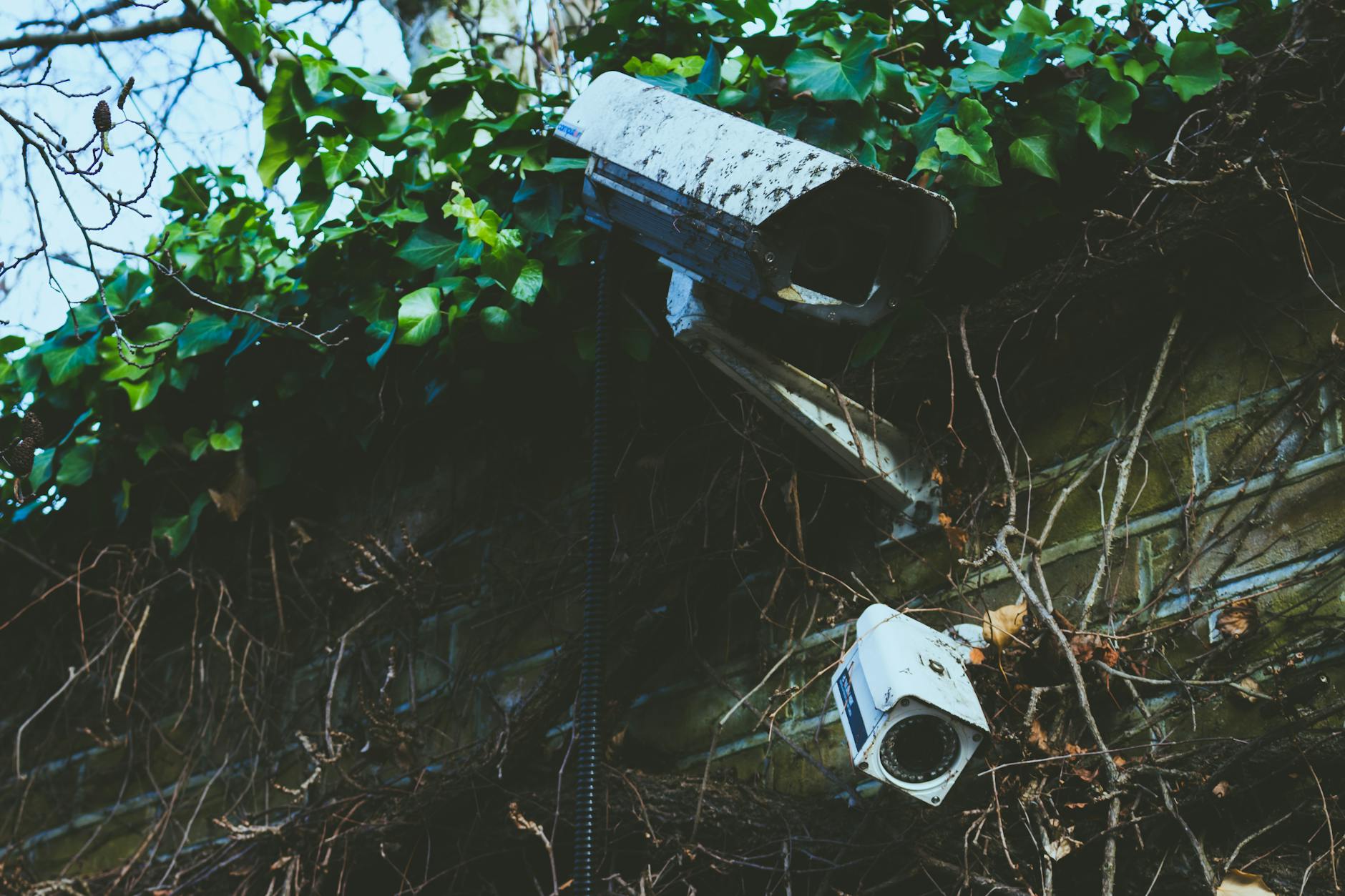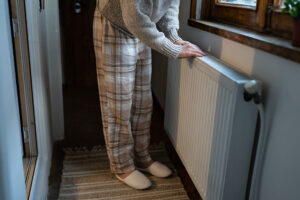Heating oil theft isn’t just an annoyance, it hits your wallet and can leave your family out in the cold. Thieves often target outdoor tanks, especially when prices rise and oil becomes a tempting target. A stolen tank of oil can cost hundreds of pounds to replace, and might damage your tank or property during the theft.
With fuel prices reaching new highs, a few smart steps can make a big difference. Locking your tank, choosing the right spot, and using simple security upgrades help keep your supply safe and your heating bills under control. This guide shows easy, practical ways homeowners can protect their oil and avoid the stress and expense of theft.
How Heating Oil Theft Happens: The Methods Thieves Use
Heating oil theft usually feels like it comes out of nowhere, but the truth is, thieves often plan their actions carefully. Knowing how these criminals operate makes it easier to spot weak spots around your home and take steps to protect your tank and your budget. Here are the main methods used, and why being aware of their tricks matters when choosing the right ways to stay a step ahead.
 Photo by Tom Fisk
Photo by Tom Fisk
Siphoning: The Classic Tube and Pump Approach
The simplest and most common tactic is siphoning. Thieves use a hose or hand pump, dropping one end into your tank and the other into a container or barrel. If your tank isn’t locked or the cap is easy to loosen, they can suck out large amounts of oil in minutes. Old-fashioned, yet effective, this method leaves little trace—unless you notice your fuel level suddenly drops.
- Thieves often strike at night or early morning when fewer people are around.
- Tanks near driveways, lanes, or gates are prime targets since they offer a quick getaway.
- Clear signs include open or broken tank lids and muddy footprints leading away from the tank.
Drilling into Tanks: Quick and Quiet Damage
For tanks made of plastic, drilling is a favorite. Thieves bring battery-powered drills, punch a hole near the bottom, and drain oil straight into large drums. It takes a bit more time and planning, but it’s quiet and avoids old-fashioned locks altogether.
- Drilled holes cause messy leaks and expensive cleanup.
- Often, a thief will cover the hole with tape so you don’t spot the damage right away.
- If you see oily puddles or new stains under the tank, check closely for drilling.
Cutting Pipes and Damaging Gauges
Some thieves skip the cap or tank body and go for your pipes or fuel line. By cutting the supply pipe leading from the tank to your boiler, they can attach a tube and drain oil straight from the line.
- This approach may leave you with not just lost oil, but major repair bills for broken pipes or fittings.
- Broken or missing fuel gauges are another sign—these are often smashed to either disable alarms or to allow unmonitored draining.
Forced Entry: Crowbars and Bolt Cutters
Physical force is less subtle, but it works against basic locks and unprotected caps. Thieves often bring crowbars or bolt cutters to snap open padlocks or force entry into locked cages.
- Cheap or rusted locks can be opened in seconds.
- Damage to cages or locks is usually easy to spot, but the oil might already be gone when you notice.
Using Technology: Finding Tanks with Maps
Surprisingly, some thieves use tools like satellite maps to spot tanks visible from the road or fields. Tanks in plain view, close to public tracks, or with easy vehicle access, are singled out because thieves want a fast in and out.
- Homes in rural or less-visible areas may still be at risk if tanks are easy to find online.
- Markings in mud or grass left by van tires are sometimes the only clue left behind.
Why Understanding These Methods Matters
When you know how thieves work, you don’t just worry—you can act. If your lock seems flimsy or your tank sits out in the open, it’s not just a minor detail. Each method above points out where stronger defenses or better habits can make a real difference. Protecting your heating oil starts with thinking like a thief—so you can outsmart them before they even have a chance.
Key takeaways:
- Thieves prefer easy targets with poor visibility and weak locks.
- Methods range from simple siphoning to damaging pipes or using tools for forced entry.
- New tricks, like spotting tanks from mapping apps, show that old tricks get modern upgrades.
Spotting these risks lets you choose the best ways to keep your fuel (and peace of mind) safe.
Physical Security Measures: Securing Your Heating Oil Tank
Keeping your heating oil safe starts with smart physical protection. Thieves often spot and target tanks that are left out in the open, have easy access, or lack visible barriers. By focusing on where you place your tank, how you hide it, and which security upgrades you choose, you can make your fuel much harder to steal. Here’s how to set up your tank so it isn’t an easy target.
Best Practices for Tank Location and Concealment
 Photo by Brixiv
Photo by Brixiv
Where and how you install your heating oil tank makes a big difference in security. Tanks placed out in the open or near gates and roads are prime targets. Homes with tanks hidden from public view but visible from inside the house are the hardest for thieves to rob.
A few simple strategies to improve tank protection:
- Place your tank close to the house. If you can see it from a window, so can you spot unwanted visitors.
- Keep your tank out of direct view from roads or driveways. Use garages, sheds, or privacy screens where possible so thieves can’t easily spot it on maps or from the street.
- Surround the tank with natural barriers. Plant thick, prickly hedges (think holly, hawthorn, or Berberis) around and behind the tank. Not only are these shrubs tough to push through, but they also make the tank less appealing to approach.
- Install a sturdy fence or a lockable cage. Well-built timber fences or metal cages around the tank add a physical barrier and force thieves to spend time and make noise if they try to get through.
- Upgrade to a bunded or double-wall tank if possible. These tanks provide another layer thieves must break through and offer environmental protection if someone tries to drill or damage the tank.
- Never block access completely for maintenance. Make sure your tank is still reachable for servicing but not easy pickings for criminals.
By taking these steps, you send a clear message: your fuel won’t be an easy grab.
Enhancing Security with Lighting and Surveillance
Thieves love the cover of darkness, so brightening up your tank area works wonders. Lighting and modern surveillance add another level of worry for would-be criminals.
Practical ways to protect your tank using lights and cameras:
- Install motion-activated lights near the tank. These lights snap on when anyone approaches, making it risky for thieves to work unchecked. Setting them up where shadows once hid your tank will spook most intruders.
- Fit a visible CCTV camera or dummy camera. Even a single camera, in plain sight and pointing at the tank, makes thieves think twice. Some homeowners use affordable wildlife or trail cameras as a budget option, which can catch activity day or night.
- Place warning signs. ‘CCTV in Operation’ or ‘24 Hour Surveillance’ signs act as psychological roadblocks. Thieves tend to move on when they think they’ll be caught on camera.
- Connect cameras to an app. Many modern cameras let you view footage from your phone and send you alerts if unusual movement is detected.
- Use lighting along access routes and gates. Don’t just light up the tank itself—make it hard to approach in the dark without being spotted.
Combining good lighting and visible surveillance makes your tank a far less attractive target. The goal is to make stealing your oil look like just too much trouble.
Electronic Protection: Modern Technologies to Deter Theft
Heating oil tanks may seem like easy targets, but smart technology changes the game. With modern alarms and remote sensors, you don’t need to be home to keep tabs on your fuel. Instead of relying only on fences and locks, these new tools use real-time alerts and automated monitoring to help stop thieves before they strike, giving homeowners more peace of mind.
Alarm Systems and Oil Level Monitoring
Tank alarms and oil level monitors add a virtual guard to your property. These electronic systems do more than just beep—they’re designed to react quickly when something is wrong.
- Alarms Detect Tampering: Many tank alarms trigger if the outer shell is jostled, a lid is removed, or the tank is drilled. Some connect to sirens that give off a loud alert, while others send you a silent notification.
- Sudden Drop Sensors: Electronic level monitoring systems use ultrasonic or float sensors to spot rapid drops in oil. If the system sees a big dip in fuel (the kind that happens with a siphoning or drilling job), it sends a warning right away to your phone or loud alarm in your home.
- Continuous Tracking: Smart oil gauges constantly check your tank’s fuel level. If you’re out or on holiday, you’ll know if the level drops outside of normal use patterns.
- Early Warning Means Fast Action: The best part is you get a heads-up. If a thief tries to steal your oil, you’ll be alerted before they can finish the job—giving you a better chance to call for help or scare them off.
Benefits include:
- Less risk of losing an entire tank to theft
- Protects against expensive leaks or damage
- You know what’s happening 24/7, even if you’re not home
Smart Home and Remote Monitoring Solutions
Today’s tech lets you keep an eye on your oil from anywhere. Smart home integration connects your tank security straight to your pocket.
 Photo by Dom J
Photo by Dom J
- Mobile Apps Deliver Real-Time Alerts: With a Wi-Fi-enabled oil gauge or level sensor, you can watch your fuel levels from your smartphone or tablet. If something suspicious happens, the app pings you instantly—no more waiting until morning to find your oil gone.
- Integration with Security Cameras: Modern home security systems let you see live video of your tank, often in the same app as your oil monitor. Add motion-triggered cameras or lights so you can check appearances when an alarm goes off.
- History and Analysis: Many smart apps offer delivery predictions and usage data. Over time, you can compare normal usage versus sudden loss, making it easier to spot theft or leaks early.
- Remote Support: Some devices let you share monitoring with family or even a trusted neighbor, so someone else can check in if you’re away.
Pairing your oil tank with your smart home setup means you’re always in the loop, whether you’re at work, visiting friends, or tucked up in bed. These systems help you relax, knowing you won’t wake up to a cold house and an empty tank.
Environmental and Financial Risks: Why Prevention Pays Off
Heating oil theft isn’t just about losing money. When thieves damage tanks or pipes, the risks go well beyond your household. Heating oil leaks can quickly cause lasting harm to your land, water, and local wildlife, and sorting the mess can get expensive fast. Add the need to navigate insurance claims, and it’s easy to see why staying ahead of trouble pays off. Let’s look at the real-world costs and how you can protect your home and your wallet.
Minimizing Environmental Impact of Tank Damage
A damaged oil tank is more than an eyesore. Just a small spill can spread quickly, soaking into soil, polluting groundwater, or making its way to drains and nearby watercourses. According to EPA guidance, even a single quart of oil can cover nearly three football fields if it hits water, showing how big the risk is even with a small spill.
Oil leaks cause:
- Harm to local wildlife: Birds, pets, and small animals that come in contact with oil can get sick or die.
- Soil and water pollution: Spilled oil doesn’t simply disappear. It can linger for years, ruining gardens, lawns, and even getting into wells or streams.
- Bad smells and health hazards: Strong odours and fumes create risks for your family and neighbors.
When a spill happens, act fast:
- Limit the spread. Use absorbent materials (granules, mats, or pillows made for spills) to keep oil from moving further.
- Keep people and pets away. Oil is toxic, and contact can irritate skin or cause more serious issues.
- Call professionals. Cleanup is rarely a DIY job. Trained experts can stop the leak, check for hidden damage, and safely remove contaminated material.
Prompt action keeps a small problem from becoming a disaster. Plus, environmental rules mean you could face fines or enforcement if a leak from your property hurts local water or wildlife. That’s another reason to fix tank damage immediately and use professional help for repairs.
Insurance Coverage and Reporting Theft
When theft or tank damage happens, the right insurance can save you from eye-watering costs. But not all policies cover oil theft or cleanup — so don’t assume you’re safe without checking.
Here’s how to protect yourself before you need to make a claim:
- Read your policy closely. Look for specific cover for “heating oil theft,” “accidental spillage,” and environmental cleanup. Some standard home insurance only covers the tank, not the oil or spill costs.
- Ask about exclusions. Some insurers won’t pay out if your tank isn’t locked or if it doesn’t meet current standards. Confirm what you need to do to qualify.
- Document your setup: Take photos of your tank, security, and surroundings. If you make upgrades (new lock, cage, alarm), keep records.
If you discover theft or tank damage:
- Contact your insurer right away. Delaying can put your claim at risk.
- Report the theft to police. A crime number is usually needed for insurance and helps local authorities spot theft patterns.
- Get an expert assessment. A professional can provide the evidence your insurer will want for repairs or cleanup.
- Don’t clean up yourself. Wait for advice — removing contaminated soil on your own could cause more harm or hurt your claim.
By knowing what your policy covers and acting quickly, you avoid nasty surprises and make sure your finances—and the environment—bounce back sooner. Prevention and planning don’t just save oil, they save time, stress, and protect your neighborhood from lasting damage.
 Photo by Kindel Media
Photo by Kindel Media
Proactive Habits and Community Vigilance
Staying ahead of heating oil theft depends just as much on good habits and neighborly teamwork as it does on locks, lights, and alarms. Thieves count on you not noticing the little things or feeling isolated when something looks off. By making simple checks part of your routine, and joining forces with others in your area, you make your home far less inviting for troublemakers.
Routine Tank Checks and Recognizing Warning Signs
Spotting problems early keeps heating oil theft from turning into a major headache. Routine inspections are one of the best habits any homeowner can adopt. When you know what normal looks like, you pick up on changes quickly.
It’s smart to walk around your tank every week, especially during the colder months when usage and thefts both increase. Here’s what to check for:
- Unusual drop in oil levels: If your tank seems emptier than expected, but you haven’t used much, this is a red flag.
- Loose or missing caps and locks: Even a small gap on the filling cap can be a sign someone tried to get in.
- New marks, scratches, or tool marks: These can show that someone has been tampering with your tank or fittings.
- Broken gauges or alarms: If your level gauge is smashed or hanging off, someone may have tried to disable it.
- Puddles or stains under the tank: Leaks and spills, especially new ones, can indicate a siphoning attempt or a botched theft.
- Muddy footprints or tire tracks: Marks leading to or from secluded areas often mean someone has been snooping.
Keep your tank clear of leaves, dirt, or other clutter so you can spot changes right away. It’s also smart to:
- Check surrounding fences, hedges, and gates for damage or tampering.
- Clear away overgrown bushes that could hide a thief from view.
- Log any issues or oddities in a notebook or on your phone with dates and photos.
Catching these warning signs early can help you stop thieves before they empty your tank.
Working with Neighbors and Community Initiatives
You’re not alone when it comes to stopping heating oil theft. Talking with your neighbors and taking part in community watch groups can make your whole area safer. Thieves target quiet streets and homes where no one pays attention, so visible teamwork keeps them away.
 Photo by Tom Fisk
Photo by Tom Fisk
Ways to boost security through your community:
- Share reports of suspicious activity: Use texts, group chats, or apps to alert your street if you spot someone hanging around, or see vehicles you don’t recognize near tanks or driveways.
- Coordinate camera coverage: Even if not everyone has a security system, overlapping cameras and visible signs make every home less interesting to crooks; let your neighbors know if you have one pointed toward the street or tank area.
- Arrange staggered vacation coverage: If you or a neighbor leaves home for a few days, have someone else keep an eye on both properties. Taking bins out, parking a car in the drive, and regular walk-bys make the home look lived in.
For a bigger boost, get involved with a local neighborhood watch group. These programs work by:
- Bringing residents together for regular meetings to discuss recent activity.
- Sharing tips and updates from local police about trends in fuel theft.
- Putting up watch signs, which alone can discourage opportunistic thieves.
- Organizing neighborhood clean-ups or light installations to remove dark hiding spots.
According to the National Neighborhood Watch, communities with active watch programs see measurable drops in property crimes. These programs aren’t about being vigilantes but about everyone doing their part and reporting unusual activity right away.
When you take these steps, you don’t just protect your own oil—you raise the bar for safety across your whole street. The best part? You’ll know your neighbors better, making your community friendlier and more secure for everyone.
Conclusion
Protecting your heating oil means more than just fitting a new lock or hiding your tank. The best results come from layering practical steps: strong locks, hidden or reinforced tanks, motion sensors, security lights, and regular checks. Adding smart tech like remote oil monitors and linking up with neighbors strengthens your defenses even further.
No single method is enough on its own, but together, these habits make your home a much tougher target. Staying alert, using the latest security tools, and looking out for each other keeps thieves out and peace of mind in.
Thanks for reading—if you’ve used any of these tips or have your own to add, let others know in the comments. Working together, every homeowner can make heating oil theft a thing of the past.




